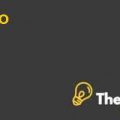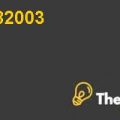Summary
The case illustrates the market conditions and the industry trend of wine and its consumption. In 2001, the US wine industry faced immense competition and consolidation of wine types, which gave rise to acompetitive environment, making many players enter while also forcing many to leave the market. It demonstrates how the competition and saturation of the market affects the demand and simultaneously, the supply of wine. It also discusses the competitive advantage of the companies who have strong distributors and the retail markets which have a strong customer base and high footfalls. Since the market of US is extremely competitive with saturation in two segments – premium and low tier, the profits and market share of the companies have shrunk and also made the entry of new entrants difficult in terms of sustainability.
In order to deal with these issues, the case represents the following recommendation for the new entrants when entering into the market while also for the existing player who are facing shrunken profits. In order to enter the market, the new entrants should target a market segment that exists between the high and low tier market. It should use strong advertisement campaigns to engage the perception of the non-users of wine, which will give a totally new market to the new entrants.
Also, it should focus on developing a blue ocean strategy rather than following the path of old players. For existing players, the players should focus on developing a strategy based on cost leadership and economies of scale. Because it will help them to align themselves with the business strategy of the distributors and the retail marketers. Hence, will enable them to maximizethe target number of consumers with no discrepancy in the supply chain.
Keywords: Porter 5 forces, Rivalry, Blue Ocean Strategy, Wine industry.
The US wine industry in a mature market Harvard Case Solution & Analysis
Introduction
The US wine industry is facing immense competition that is leading to shrunken market shares and profits. The industry is divided into two tiers, namely, the premium and budget tier. The premium market functions on differentiation strategy while the low tier functions on cost leadership,pursuing economies of scale.
The wine is categorized as premium or low in terms of its origin, however, the US market remains indifferent to the difference among any type of wine, which leads to low consumption and brand value for wines. In addition, the US market, being the 4thlargest producer of wine, is ranked as the 34thlargest consumer of wine. The ranking depicts a severe loophole in the positioning of wine in the mind of the consumer.
Furthermore, since the US market consumption rate decreased over the course of time, the supply of distributors has also decreased, making the bargaining power of the distributor high and making producers to change their pricing strategy. Sucha deadlock arises when the distributor enforces the producers to lower the price in order to achieve economies of scale, which misaligns with the business strategy of the producers due to low profits and revenues. Also, 70% of the US wine producers targeted low tier segments while only 30% targeted the premium wine consumers in the US market......................
This is just a sample partical work. Please place the order on the website to get your own originally done case solution.










